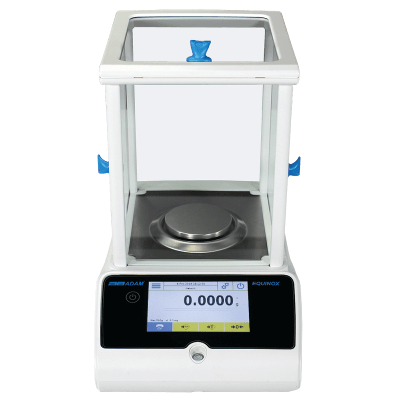
If you shop for precision lab balances, you may have noticed that some balances offer internal calibration as an option. If you have to use an acutely precise instrument for complex applications, you know how important calibration is. But if you have to pick between two calibration options, how do you choose? How do they differ? What are the pros and cons? All balances should be calibrated, but the higher the resolution of the weighing instrument, the more important the calibration. Below we will dive into the different settings and help you pick which is right for you.
You can define calibration as the act of verifying an instrument's readings when compared against a known standard (in the case of balances that is a mass) that reflects the standards of metrology. Calibration essentially validates that the instrument's results will be precise, helping to reduce errors and uncertainty in measurements.
.png)
What is external calibration?
External calibration is the process of manually calibrating a balance with a predetermined mass. Basically, users set the weighing instrument to calibrate (manually or through menus with digital balances), put the calibration mass on the balance and verify that the weight displayed is correct. For an example of external calibration, you can watch tutorials on external balance calibration on our YouTube channel, or read the product manuals.
How to calibrate a balance externally
To conduct external calibration, you need calibration masses adapted to your balance (a semi-micro balance needs much smaller weight increments than a large pan precision balance). Weight sets come with a few calibration masses, a case to store them, and gloves or forceps to handle them. The calibration masses need to be treated with extreme care; they must be properly maintained in order to stay the same weight. External calibration is dependent on a few factors: the conditions of the calibration masses and whether the user is calibrating the instrument properly.
It's a manual process, so be sure to incorporate external calibration time into your routine when using a weighing instrument. Most balances can be calibrated externally. Some balances give users the option of both internal and external calibration. Some instruments and organizations require external calibration to be performed as a service by authorized companies.
.png)
What is internal calibration?
Internal calibration is a process that uses the balance's inner mechanism to self-calibrate. This is usually accomplished through menus using the balance's display and keypad. This option adds cost to the balance price, but users don't need to buy a full calibration set to calibrate the balance. This feature is commonly found on high-grade analytical balances and microbalances.
How to set up automatic internal calibration
Some balances with internal calibration feature automatic internal calibration. This adds cost to the price of the balance, and is usually only available for lab balances (precision, analytical and semi-micro, for example). Users can set the balance to calibrate automatically at a predetermined time intervals, if there are temperature changes in the environment the balance is used in, if power is lost, etc. This feature can be very useful for busy labs; users don't have to perform the calibration process and there's no chance of anyone forgetting, so the balance gives reliable results and the user can focus on preparing samples or other tasks. The balance can also be setup to calibrate itself when the lab is closed, for example, so that the balance is always usable whenever people are working, thus maximizing productivity.

So which option is best for me?
It depends. If you have the time to routinely perform calibration and have a tight budget, balances with external calibration might be the best option. If you don't want to purchase and maintain a weight set or spend precious work hours calibrating your balance, internal calibration will save time. If you know there will be a lot of minute changes in the environment that may affect the accuracy of the balance, automatic internal calibration can save you time and money in the long run. Consider how much time you'll be spending calibrating the balance, and whether that time would be better spent on other tasks.
Do you have questions or comments? Don't hesitate to contact us, and follow us on social media for more blog posts and new about Adam Equipment and our products. Thank you for reading!

